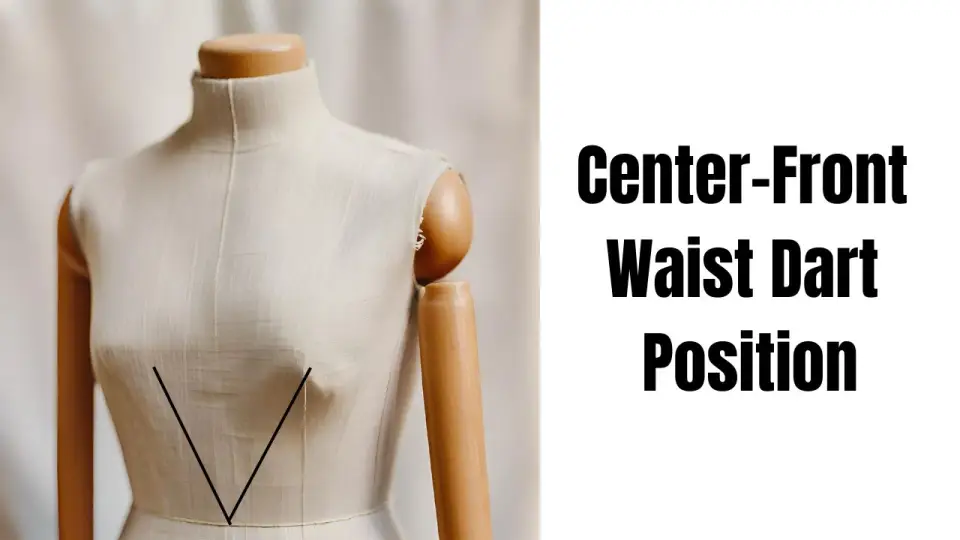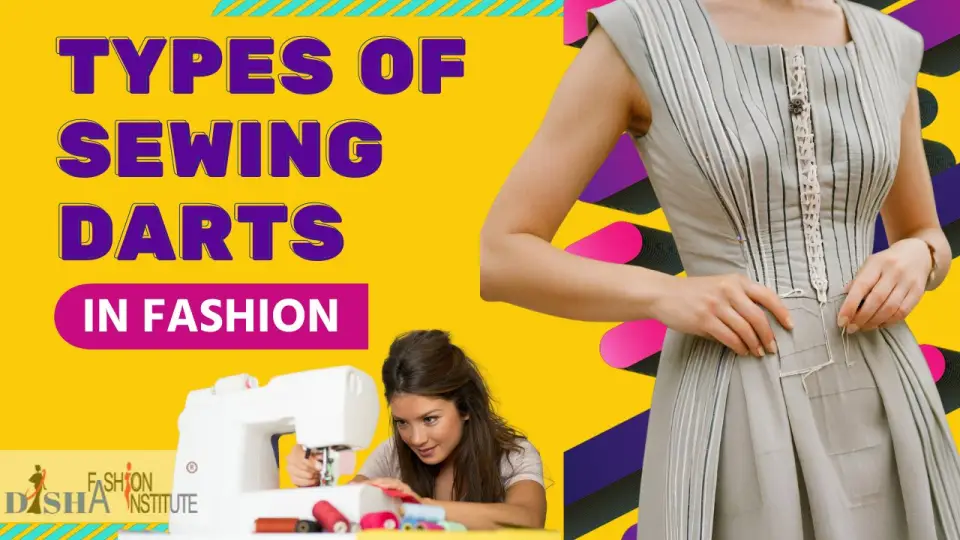Exploring 15 Different Types of Darts in Sewing for Perfect Garment Sculpting
Since we have learned what is dart in sewing, we will now learn what are the basic 15 types of darts that you must know if you are going to make a garment.

Table of Content
- #1 Single-Pointed Dart or Standard Dart
- #2 Bust Darts
- #3 Waist Darts
- #4 French Darts
- #5 Middle Shoulder Dart
- #6 Shoulder-Tip Dart
- #7 Mid-Neck Dart
- #8 Center-Front Neck Dart
- #9 Center-Front Bust Dart
- #10 Center-Front Waist Dart
- #11 Mid-Armhole Dart
- #12 Elbow Dart
- #13 Curved Dart
- #14 Double Pointed Darts
- #15 Dart Tucks
- Conclusion
#1 Single-Pointed Dart or Standard Dart
This is the most basic type of dart, consisting of a triangular or wedge-shaped fold that starts at a single point and tapers towards nothing. It is strategically incorporated into a garment pattern to create shape and contour by removing excess fabric and allowing the garment to follow the natural curves of the body. These darts are often used at the bust or waist areas to provide shaping. These darts are often placed in areas where shaping is needed, such as the bust, waist, or back. The exact placement depends on the design of the garment.
Uses of Single-Pointed Dart: Standard darts usually start at or near a seam line, such as the side seam or waistline. The dart base extends from the seamline, and the dart legs are stitched together from this base to shape the fabric up to the apex point.
Single-pointed darts have other names, such as Bust Darts (When sewed around the bust area, providing a more contoured fit), Waist Darts (found in skirts, pants, and dresses where shaping around the natural waistline is necessary for a definite waist look), Back darts (Sometimes sewed at the back to improve the overall fit) and many more.
#2 Bust Darts
A bust dart is a straight dart that is constructed with two straight dart legs that start under the armhole and extend to the bust point. This kind of dart starts two inches below the armhole and ends three-fourths inches from the apex point. The length of the bust dart depends on the size of the bust. If the bust is bigger, the dart length will be longer according to the size.
How to put bust darts in a dress?
#3 Waist Darts
Just like the bust dart, the waist dart is constructed with two straight dart legs, which start from the middle of the waistline of one side of the front bodice and end near the bust point or apex point. The length and size of this dart depend on the design and pattern of the garment.
#4 French Darts
French dart is a type of elongated bust dart that extends from the side seam and tapers toward both the bust and waist, providing shaping to the bodice. It generally starts near the waistline and ends near the apex point of the bodice. A French dart is a great option in dart manipulation techniques as it alone can work as both a bust and waist dart by providing a more integrated and elongated shaping effect. This elongated nature of French darts can visually elongate the torso, creating a flattering and elegant look.
Uses of French Dart: French darts are commonly used in blouses and shirts, i.e. the upper garments with a more tailored or fitted bodice. They enhance the overall fit and add a touch of elegance to the garment.
#5 Middle Shoulder Dart
As the name suggests mid shoulder darts start from the middle of the shoulder line and extend to the apex point. The angle and length of the dart depend on the pattern and the design. These darts are generally used on fitted dresses, corsets, etc.
#6 Shoulder-Tip Dart
This dart starts from the shoulder tip, i.e., the end part of the shoulder arm and extends towards the apex point as a diagonal line. This kind of dart provides an elongated look at the shoulder area and a fitted and formal appearance.
#7 Mid-Neck Dart
The Mid-neck dart starts from the neckline of the bodice. It is used to give a profound look at the neck area. Sometimes, this dart can be used for decorative purposes rather than functional ones.
#8 Center-Front Neck Dart
It is a variation of the Neck dart, which starts from the centre front area of the neckline of the garment and ends near the apex point as a diagonal line. Like mid-neck dart it is also used for decorative as well as functional purposes.
#9 Center-Front Bust Dart
Another variation of the Bust Dart, the Center-Front Bust Dart, is typically used for making blouses that help get a more natural look at the bust area.
#10 Center-Front Waist Dart

This is also a variation of the Waist Dart, which starts from the centre-front part of the waistline of the upper bodice. It helps to get an elongated look and might be longer than the standard Waist dart.
#11 Mid-Armhole Dart
This dart can be constructed easily. It starts from the mid-armhole point of the front part of the upper bodice and ends near the apex point or bust point. Just like the above darts, it also helps to get a more fitted and tailored appearance.
#12 Elbow Dart
This unpopular dart is constructed at the elbow area to give the sleeve a more fitted look. These kinds of darts are more prominent in formal blazers and fitted gowns.
#13 Curved Dart
A curved dart follows a curved or slanted line, as opposed to the straight lines of a standard dart. This design allows for more organic shaping, making it particularly useful in areas where the body’s curves need to be accommodated, such as tops, dresses, skirts and pants. Curved darts have a gently curved or slanted line, providing a more natural, gentle and flowing shape compared to the straight lines of standard darts.
#14 Double Pointed Darts
Double-pointed darts, also called Fish-eyed darts, are usually used in dresses or jackets, with dart legs extending in opposite directions from a central seam. It is like two darts whose dart points are joined together from the opposite side. It also looks like a diamond as it is narrow from both ends and wide at the centre.
These darts are typically placed at the centre front or centre back of a garment, with the dart points radiating outward. This shaping is often applied to create a more fitted and contoured look. Depending on the placement and size, these darts can serve as a design element also, adding visual interest to the front and back of a garment.
#15 Dart Tucks
These kinds of darts are not actually the traditional type of darts. It is drafted as the double-pointed dart, but we sewn only half part of this dart, and the other half is left unsewned, giving a pleated look and a fullness to garments.
Conclusion
In our exploration of the intricate world of sewing darts, we've delved into the fundamental techniques that elevate garments from flat fabric to tailored wonders. From the foundational Single-Pointed Dart to the creative versatility of Dart Tucks, each dart type plays a unique role in sculpting the perfect fit.
Understanding the intricacies of these 15 different dart types not only equips you with the technical know-how for precise garment construction but also opens the door to a realm of creative possibilities. Whether you're a seasoned seamstress seeking to refine your craft or a novice eager to embark on the journey of garment creation, the knowledge gained here serves as a valuable guide.
As you venture into the world of sewing, let these diverse dart types be your tools for transforming fabric into art. May your stitches be precise, your creativity boundless, and your garments a testament to the mastery of dart sculpting in the realm of sewing. Happy stitching!
![[DISHA] The Best Tailoring School](/media/plg_jspeed/cache/images/Disha_logo.webp)



